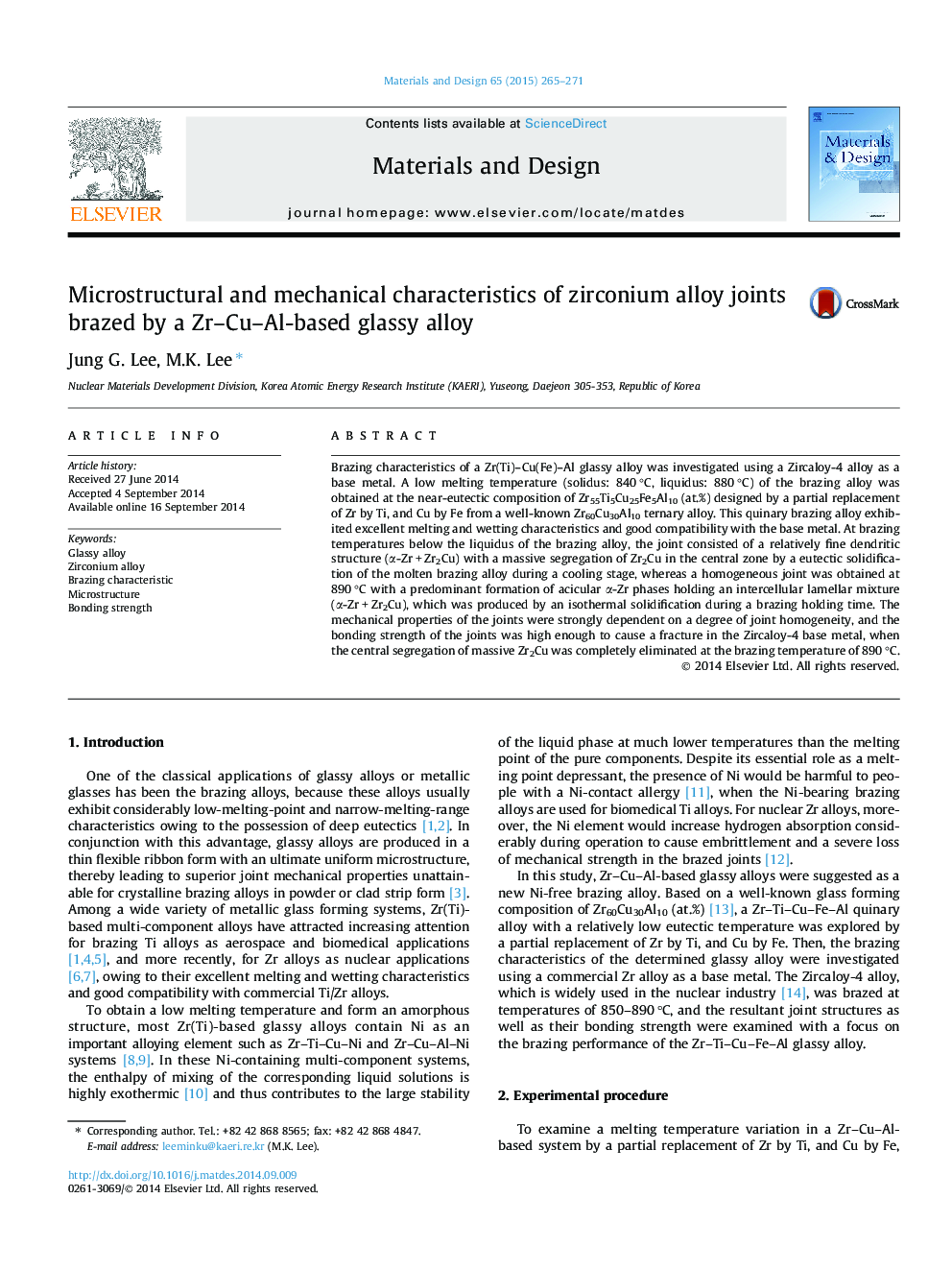| کد مقاله | کد نشریه | سال انتشار | مقاله انگلیسی | نسخه تمام متن |
|---|---|---|---|---|
| 828805 | 1470332 | 2015 | 7 صفحه PDF | دانلود رایگان |

• A Zr–Cu–Al-based glassy alloy was employed as Ni-free brazing alloy for Zr alloys.
• Quinary Zr55Ti5Cu25Fe5Al10 was designed based on Zr60Cu30Al10 ternary system.
• Resultant joints were evolved by controlled solidification of molten brazing alloy.
• Homogenization of the joints was rate-controlled by diffusion of alloying elements.
• Bonding strengths were sensitively affected by a degree of joint homogeneity.
Brazing characteristics of a Zr(Ti)–Cu(Fe)–Al glassy alloy was investigated using a Zircaloy-4 alloy as a base metal. A low melting temperature (solidus: 840 °C, liquidus: 880 °C) of the brazing alloy was obtained at the near-eutectic composition of Zr55Ti5Cu25Fe5Al10 (at.%) designed by a partial replacement of Zr by Ti, and Cu by Fe from a well-known Zr60Cu30Al10 ternary alloy. This quinary brazing alloy exhibited excellent melting and wetting characteristics and good compatibility with the base metal. At brazing temperatures below the liquidus of the brazing alloy, the joint consisted of a relatively fine dendritic structure (α-Zr + Zr2Cu) with a massive segregation of Zr2Cu in the central zone by a eutectic solidification of the molten brazing alloy during a cooling stage, whereas a homogeneous joint was obtained at 890 °C with a predominant formation of acicular α-Zr phases holding an intercellular lamellar mixture (α-Zr + Zr2Cu), which was produced by an isothermal solidification during a brazing holding time. The mechanical properties of the joints were strongly dependent on a degree of joint homogeneity, and the bonding strength of the joints was high enough to cause a fracture in the Zircaloy-4 base metal, when the central segregation of massive Zr2Cu was completely eliminated at the brazing temperature of 890 °C.
Journal: Materials & Design (1980-2015) - Volume 65, January 2015, Pages 265–271